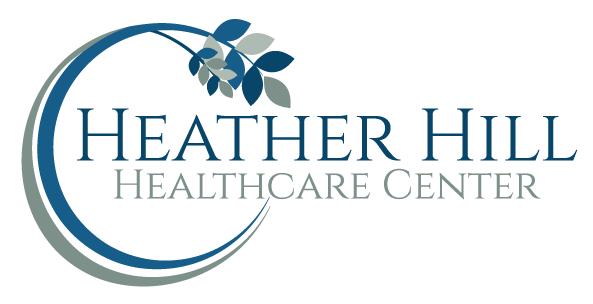Primary Care Visits between Skilled Nursing Facilities and Primary Care Doctors
Primary care visits are vital for the health and well-being of residents in skilled nursing facilities (SNFs). Coordinating these visits between SNFs and primary care doctors is crucial to ensure that residents receive timely and appropriate primary care services. In this article, we will explore in detail how primary care visits are coordinated between SNFs and primary care doctors. We will delve into the challenges and best practices involved in coordinating primary care visits, including communication, scheduling, documentation, and follow-up. By understanding the coordination process, SNFs can ensure that their residents receive high-quality primary care services and achieve optimal health outcomes.
Importance of Coordinating Primary Care Visits
Coordinating primary care visits between SNFs and primary care doctors is of paramount importance. Primary care plays a crucial role in managing acute and chronic health conditions of SNF residents, preventing hospitalizations, and improving overall health outcomes. However, without proper coordination, several challenges can arise, including fragmented care, medication errors, delayed diagnosis, and increased healthcare costs.
Ensuring that primary care visits are well-coordinated is essential to provide holistic care to SNF residents. When primary care doctors are involved in the care of SNF residents, they can monitor their health status, manage chronic conditions, and detect any potential health issues early. This can help prevent hospitalizations and reduce healthcare costs. Coordinated primary care visits also facilitate effective communication between SNFs and primary care doctors, leading to better exchange of resident health information, medication management, and care planning.
Key Elements of Coordinating Primary Care Visits
Coordinating primary care visits between SNFs and primary care doctors involves several key elements. Effective communication is crucial for seamless coordination. SNFs and primary care doctors should establish clear communication channels to exchange resident health information, medication lists, and care plans in a timely manner. Regular communication can help ensure that primary care doctors are informed about the health status and care needs of SNF residents.
Scheduling is another critical element of coordinating primary care visits. SNFs and primary care doctors should work together to schedule appointments that are convenient for both parties and ensure timely access to primary care services for SNF residents. Transportation arrangements should also be considered to ensure that residents can attend their appointments without any obstacles.
Documentation is essential for coordinated care. SNFs and primary care doctors should establish standardized processes for sharing resident health information and updating care plans. This can help ensure that primary care doctors have up-to-date and accurate information to make informed decisions about the care of SNF residents.
Follow-up care is also crucial for ongoing management of chronic conditions. SNFs and primary care doctors should collaborate to establish processes for timely follow-up visits and updates on resident health status. This can help ensure that SNF residents receive continuous and appropriate primary care services.
Challenges in Coordinating Primary Care Visits
Despite the importance of coordinating primary care visits, several challenges may arise. Communication gaps can occur between SNFs and primary care doctors, leading to delays or errors in exchanging resident health information. Scheduling conflicts may arise due to the availability of primary care doctors or transportation limitations for SNF residents. Documentation issues may occur, such as incomplete or inaccurate sharing of resident health information or care plans. Limited resources, including staffing and technology, can also pose challenges in coordinating primary care visits.
Best Practices for Coordinating Primary Care Visits
Establishing Clear Communication Channels: SNFs and primary care doctors should establish clear and efficient communication channels for exchanging resident health information, medication lists, and care plans. This can include regular meetings, secure electronic communication platforms, and designated points of contact for communication.
Standardizing Documentation Processes
SNFs and primary care doctors should establish standardized processes for documenting and sharing resident health information and care plans. This can include using electronic health record (EHR) systems, templates, and checklists to ensure accurate and complete documentation.
Streamlining Scheduling and Transportation
SNFs and primary care doctors should work together to streamline scheduling and transportation arrangements for primary care visits. This can include coordinating appointment times, arranging for transportation services for SNF residents, and considering telehealth options for remote consultations.
Collaborating on Follow-up Care
SNFs and primary care doctors should collaborate on follow-up care for SNF residents, particularly for managing chronic conditions. This can include establishing protocols for timely follow-up visits, monitoring resident health status, and updating care plans as needed.
Investing in Staff Education and Training
SNFs and primary care doctors should invest in education and training for their staff on the importance of coordinated primary care visits and best practices for coordination. This can include providing ongoing education, resources, and support to ensure that all staff members are aware of their roles and responsibilities in the coordination process.
Utilizing Technology Solutions
SNFs and primary care doctors can leverage technology solutions, such as EHR systems, telehealth platforms, and mobile apps, to facilitate communication, documentation, and scheduling for primary care visits. Implementing technology can streamline processes, reduce errors, and improve coordination efficiency
Coordinating primary care visits between skilled nursing facilities and primary care doctors is crucial for ensuring that SNF residents receive timely and appropriate primary care services. By establishing effective communication, streamlining scheduling and transportation, standardizing documentation processes, and collaborating on follow-up care, SNFs and primary care doctors can overcome challenges and ensure seamless coordination. Investing in staff education and training and utilizing technology solutions can further enhance coordination efficiency. By implementing best practices, SNFs can optimize resident health outcomes and improve the overall quality of care in skilled nursing facilities.

